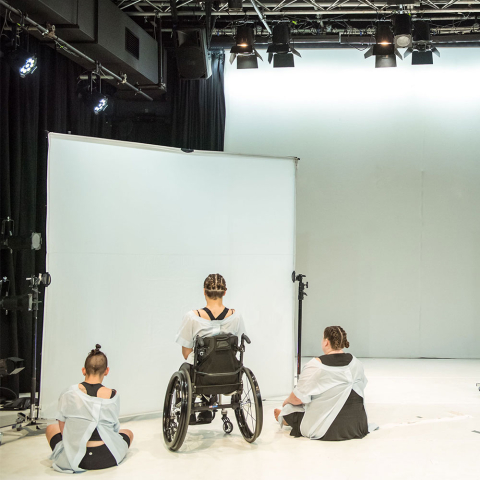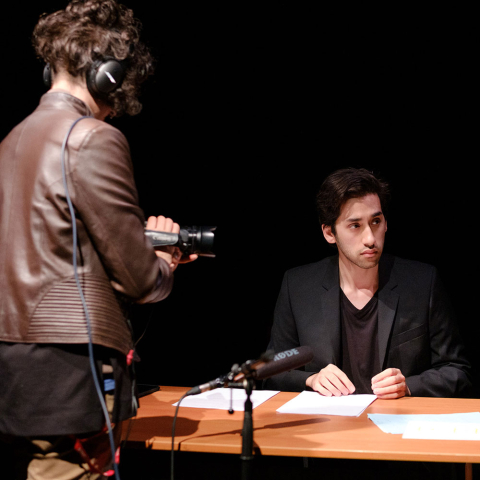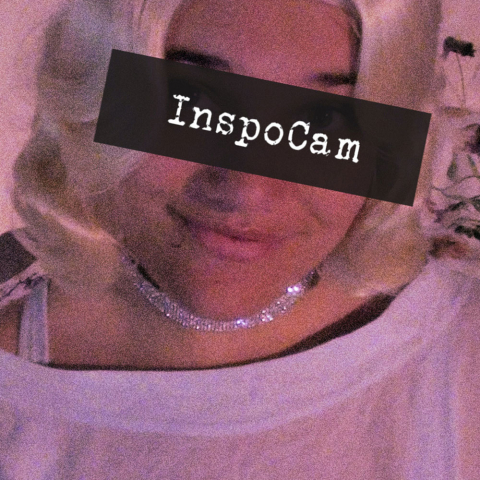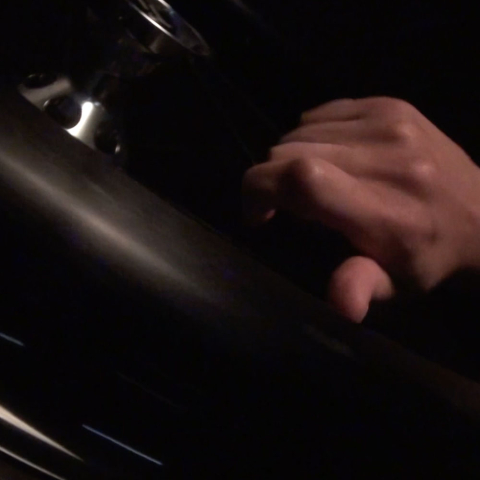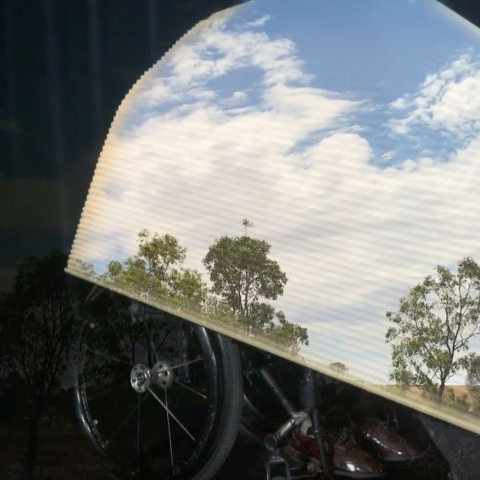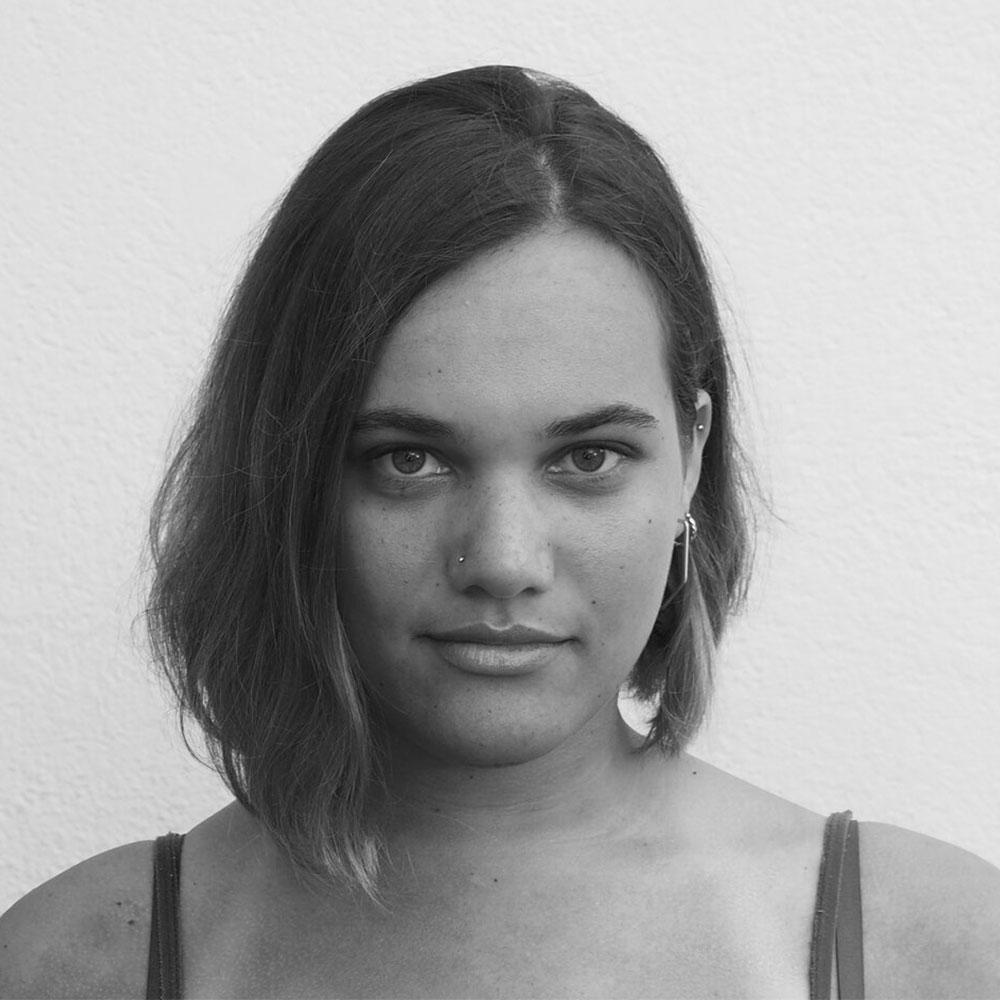
Local creative - Riana Head-Toussaint
Our local creative for April is Riana Head-Toussaint.
Riana is a local multidisciplinary artist with disability. Working across choreography, performance, video, sound and participatory installation, she regularly collaborates with other artists. Embedding access is an important part of her creative development process.
Riana was awarded an Arts & Creativity Grant to support the production of a new performance work, Inspocam, that she will be developing next month at Council’s recently opened creative space, Avalon Workshop. She hopes that projects like hers will contribute to shifting attitudes around people with disability.
Photo © Kerry Head.
Can you tell us a little about your artistic practice?
I am an interdisciplinary disabled artist, who uses a manual wheelchair for mobility. My work often crosses traditional artform boundaries, and exists in online and offline spaces. I employ choreography, performance, video, sound design, immersive/participatory installation and audience activation to create works that interrogate entrenched systems, structures and ways of thinking; and advocate for social change. The enduring concerns across my works are agency, representation, consent, objectification, the limits of empathy, and how these impact people across different marginalised intersections. My work is deeply informed by my experiences as a disabled woman of Afro-Caribbean descent, and my training as a legal practitioner.
How has the COVID-19 pandemic impacted your creative practice and experiences of arts and culture?
As a disabled artist, encountering societal barriers that hinder my participation in arts and culture is unfortunately not something new to me. There are still so many arts and cultural spaces in Australia that are deeply inaccessible; meaning that myself and members of my community are often denied artistic opportunities or experiences. However, the isolation that came with COVID-19 forced the whole world to adapt, and in the arts, this meant the ‘pivoting’ of much more work into an online realm, so that it could still be experienced by everyone while we were all in lockdown. Live streaming of performances and reconfiguring of works for digital spaces suddenly became something that was so prevalent. So, in a way, COVID-19 allowed me - and other artists in the disabled community - to participate in arts and culture more frequently and in a more equitable way that perhaps ever before. As an artist who is used to adapting to access barriers as part of my creative practice; in a sense I also felt that I had some prior knowledge and experience to draw on while I was figuring out how to continue my practice across 2020. The pandemic forced me to work in different ways, and they were at times challenging, but on the whole I found them to be genuinely fruitful learning opportunities. I am hoping that the increased digital opportunities for making and experiencing arts and culture will not disappear as restrictions continue to ease, because they have been beneficial to so many people in the disabled community and beyond – those in regional and remote areas, those with parental/caring responsibilities, etc! .
You were awarded an Arts & Creativity Grant to support the development of a new performance work, Inspocam, which you will be developing at Council’s new creative space, Avalon Workshop. Can you tell us more about this project and how it might be shared with audiences?
InspoCam is a work that explores the choreography and consumption of ‘Inspiration Porn’. The term Inspiration Porn was coined by the late and great disability activist Stella Young, and it refers to media material that objectifies disabled people for the benefit of non-disabled people – usually to motivate them, to make them feel better about their lives, etc. See Stella’s brilliant talk on YouTube. My work, InspoCam, seeks to interrogate this tendency we have to objectify disabled people in the quest for our own personal validation or gratification; and questions when, and under what circumstances (if any), it might be ok to do so. It is a performance work, and it is still evolving, but at present the performance is recorded, so it can be viewed from home – live-streamed to audiences – or watched in situ within an instillation at a venue, eg. a festival hub or gallery.
The multiple viewing options felt particularly important given our current climate; where COVID could force any one of us to stay at home unexpectedly – it’s about ensuring access and equity as much as possible. It is especially important to me because even when the vaccine is disseminated; there will obviously be so many people who will still experience isolation and barriers that will prevent them from coming to a gallery space – be they physical, financial, cultural, etc.
.
Will your project provide the community with an opportunity to learn and grow around how they think about disability?
I am hoping so! There is a persistent culture in our society where as disabled people we are not given the space to tell our own stories – instead we have them taken from us, and they are told by non-disabled people.You see this all the time in movies coming out of Hollywood (but it also absolutely happens in Australian film and TV); where as part of their characterisations, famous celebrities pretend to be people with physical impairments or mental health conditions – and they often win awards for these performances. It’s disappointing though, because it makes for average storytelling: it’s often inaccurate or stereotypical, because it just doesn’t come from a place of lived experience. Non-disabled people may think it’s accurate; but as disabled people we can always tell – it’s blatantly obvious when someone is only pretending to have the same condition as you: the nuance isn’t there, the dialogue isn’t quite right, the responses to things aren’t realistic, etc. The characters don’t feel whole – they feel like crude sketches of people – and this just brings the works down.
My piece connects to and touches on these issues. It brings up how Inspiration Porn is problematic because it reduces disabled people down and makes them one-dimensional; which leads to stereotypical and inaccurate portrayals. We aren’t given the room to be messy, or complicated, or silly, or contradictory; because as a disabled person our function is just to inspire. We aren’t portrayed as full, real people. And so I’m hoping that InspoCam will give audiences the space to reflect on how they view disability, and how different media (films, news stories, Inspo Porn memes, etc) has shaped their views of it – and perhaps even shift them a little. And for disabled audiences; I am hoping the work will make them laugh and nod and feel seen and heard, because it’s performed by someone who actually shares their lived experiences
.
Where to now? What’s on for the rest of the year?
I am lucky enough to have a few great opportunities coming up! A video work of mine called ‘First Language’ is a finalist in the Footscray Art Prize, and will open soon in Melbourne at Footscray Arts Centre! It’ll be exhibited there from 7 May to 5 June 2021. Then later in the year, I’ll be developing another work at a great art space in Parramatta called Pari. I’ll also be curating a performance night at Firstdraft gallery in the city, bringing together some really exciting emerging artists and DJs. And I’ll be continuing the legal advocacy that I do, within and outside the arts. Finally, and very importantly, I would also like to take time out to swim, eat and watch reality TV.
Gallery
Images courtesy Riana Head-Toussaint

